Using sous vide to prepare corned beef ensures your roast has the perfect texture. This recipe includes instructions to make from scratch or with store bought brisket in brine. With sous vide, you’ll cook it for 24 hours at 170 degrees F. Eat it traditionally with cabbage and potatoes, in a sandwich, or in a breakfast hash!

Corned beef is a St. Patrick’s Day classic. I’ve made it lots of ways, but before sous vide, I usually cooked it in a crockpot which was… not the best. Somehow dried out and soupy at the same time. Certainly not the meaty roast I was after.
With sous vide, corned beef comes out perfectly. The texture is meaty and just starting to fall apart while still being so juicy and tender. I can never go back!
I’ll teach you how to make corned beef completely from scratch or how to sous vide using store bought brisket already in a brine.
Want to take everything a step further and make Sous Vide Pastrami? I’ve got a recipe for that, too!
How to Make Corned Beef from Scratch
Corned beef is made using the brisket cut. Brisket can be a little hard to come by in grocery stores, especially good quality, but Costco often carries it.
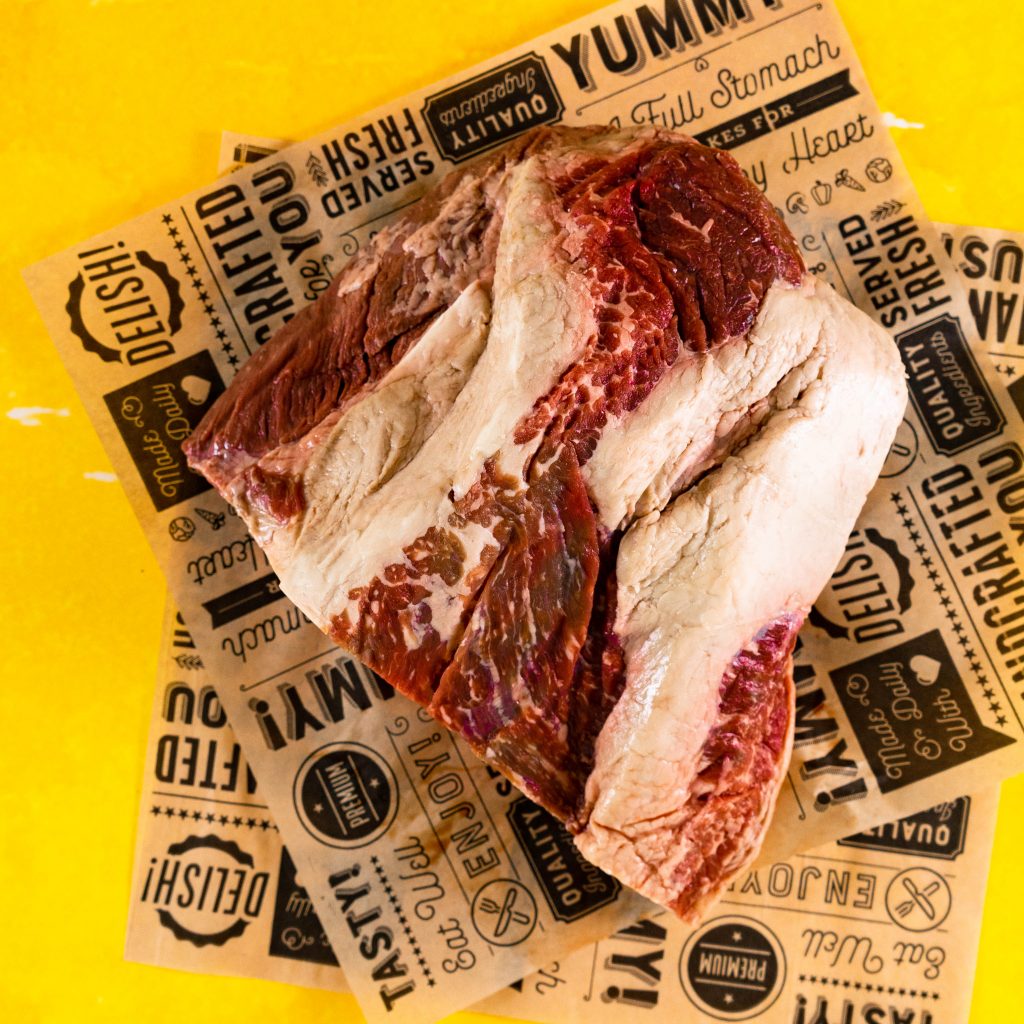
If you end up getting a whole brisket (typically about 10 lbs), I recommend cutting it in half to make it easier to handle and fit in containers for brining and sous viding.
Start by making the brine. Note I’m indicating seeds here, not the ground herbs. You’ll need:
- Whole coriander seed
- Peppercorns
- Whole mustard seed
- Dill seed
- Whole cloves
- Red pepper flakes
- Kosher salt. I always used Diamond Crystal Kosher Salt.
- Prague Powder No. 1. This is what will cure your brisket and give it that signature bright red color.
- Brown sugar
- Water
Most of this should be easy to find in your local grocery store, but you may need to order the curing salt online.
Whisk it all the ingredients together in a very large container (I recommend using a Cambro – you can find them easily at restaurant supply stores) until the powders are largely dissolved.

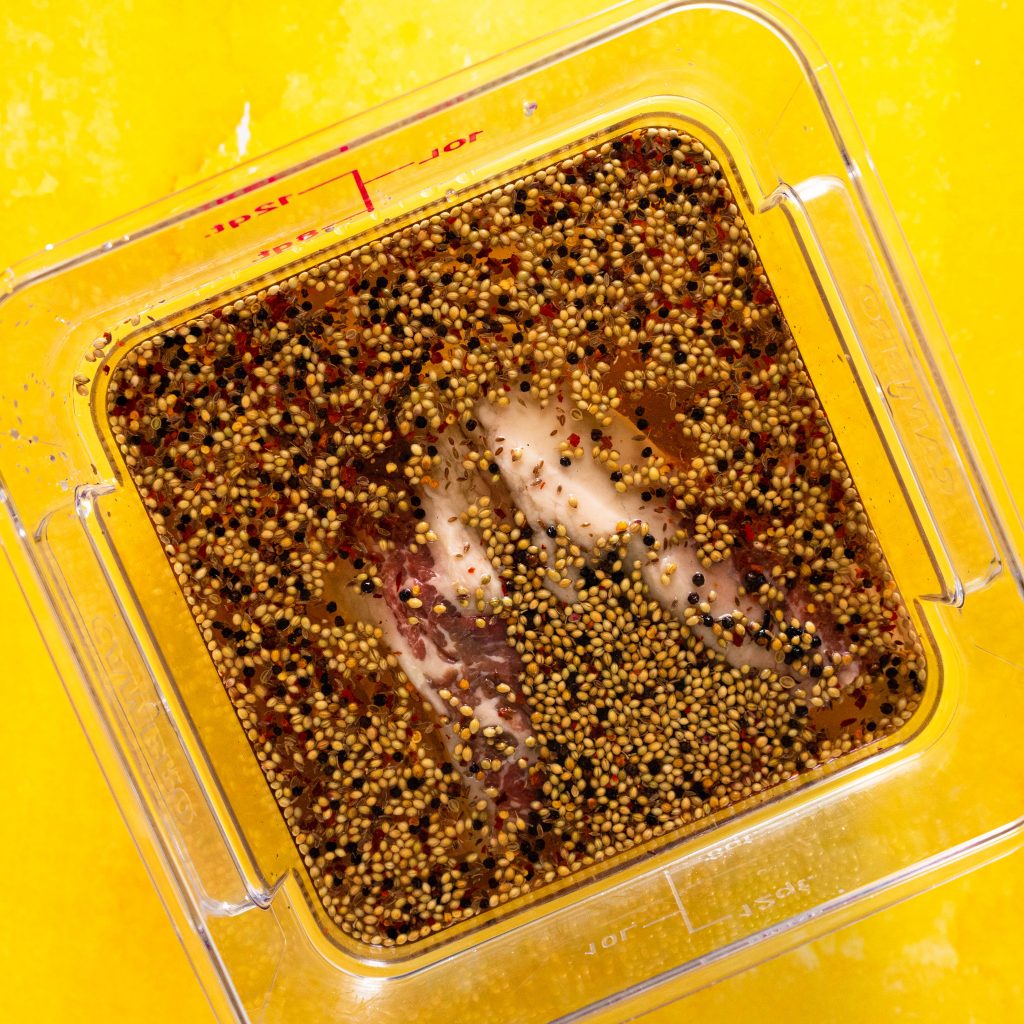
Add the brisket and make sure it’s submerged. Add more water if it’s not. Place the container in the refrigerator and let soak in the brine in the fridge for 7 days.
How to Sous Vide Corned Beef (From Scratch or Store-Bought)
You can continue with your from scratch corned beef at this point or pick up with store bought corned beef.
To make sous vide corned beef, you’ll need:
- An immersion circulator
- A large container to sous vide in. The Cambro or other container you used to brine should work for the water bath, too.
- A vacuum sealer and vacuum seal bags. If you don’t have them, use the water displacement method and a very large zipper top bag.
Remove the brisket from the brine and pat it completely dry with paper towels. It’s okay if seeds are stuck to the meat here and there, they’ll provide good flavor! If using store-bought corned beef, give it a rinse.
At this point, I like to reseason it to make sure it’s got great flavor. You don’t have to. My go to is Primal Palate’s Meat and Potatoes Seasoning, which is a blend of salt, paprika, onion, garlic, black pepper, and oregano.
You can freeze at this point to sous vide later if you want! If sous viding from frozen, add 1 hour to the cook time.
Vacuum seal the brisket. Make sure the seal is really good; I usually will use the vacuum and seal setting, then press seal again. We’ll be cooking this brisket for a loooong time, so we want to be extra careful!
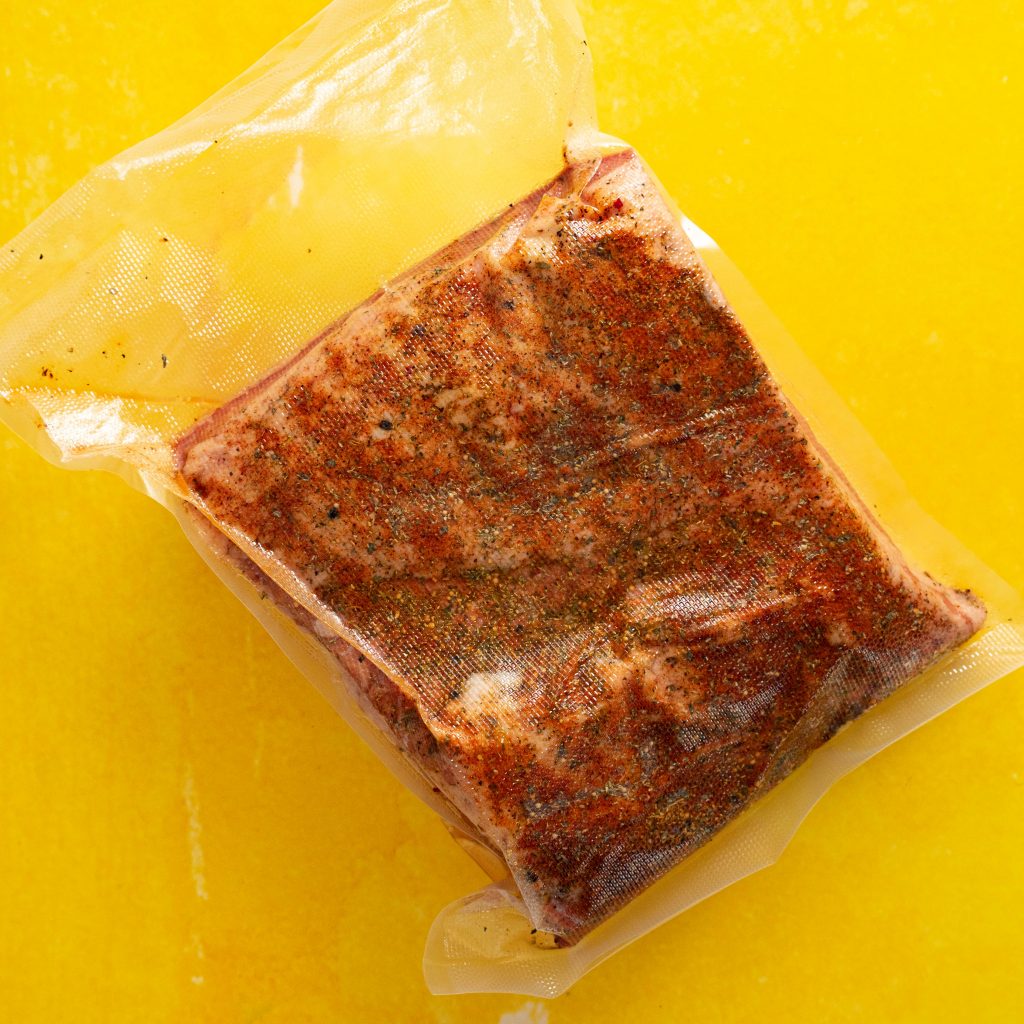
Sous vide corned beef for 24 hours at 170 degrees F. When doing a super long cook like this, there are some extra precautions we want to take. Here are my long cook tips:
- Use sous vide magnets to hold the bag in place or place a ceramic plate or bowl on top of the brisket to ensure it stays submerged.
- After you’ve added the meat, make sure the water level is as close to the maximum water line on your immersion circulator as possible. We’re expecting evaporation, so this gives you more wiggle room.
- If your container doesn’t have a lid, cover it with plastic wrap to prevent evaporation.
At this point, you can refrigerate and reheat to serve later or even freeze if you like.
If you want a little color on the fat cap when done, you can broil it for a few minutes, or just serve as is!
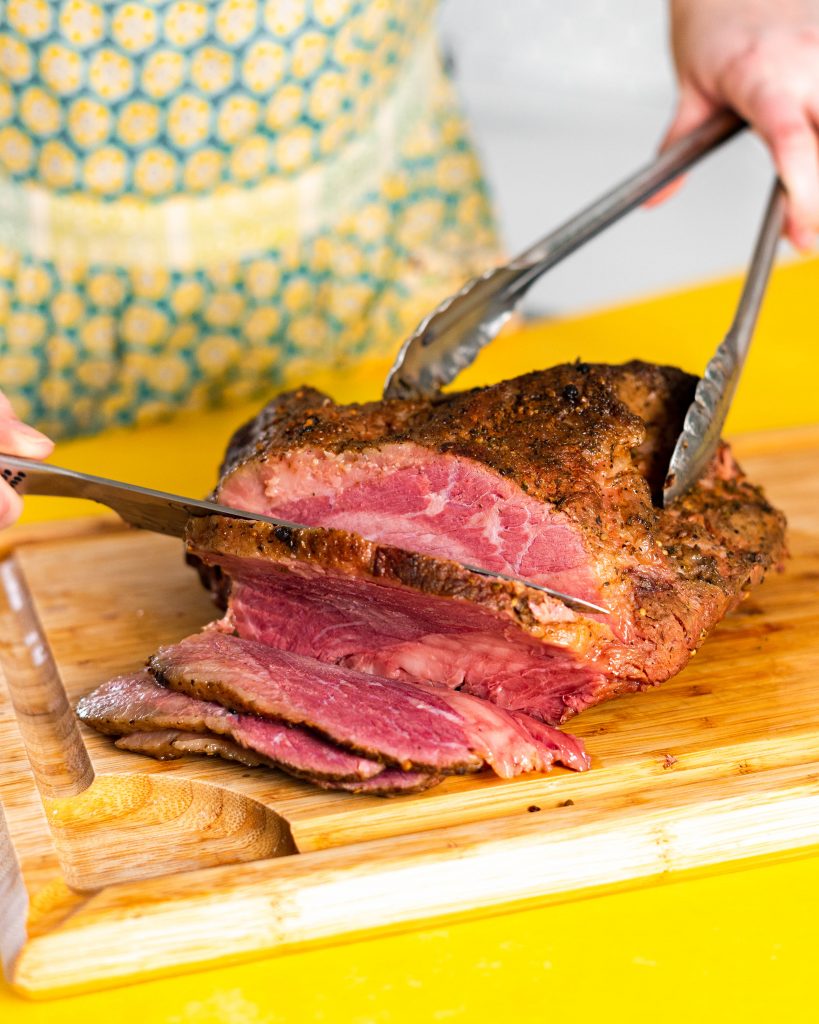
How to Make the Cabbage, Carrots, and Potatoes
This is important: save the juices from the bag after sous viding your corned beef!
Add the juices from the bag to a stock pot or Dutch oven. Add 4 cups of water or beef stock to the pot. Add cubed potatoes, cabbage wedges, and largely diced carrots. Boil for 10 minutes, or until potatoes are fork tender.
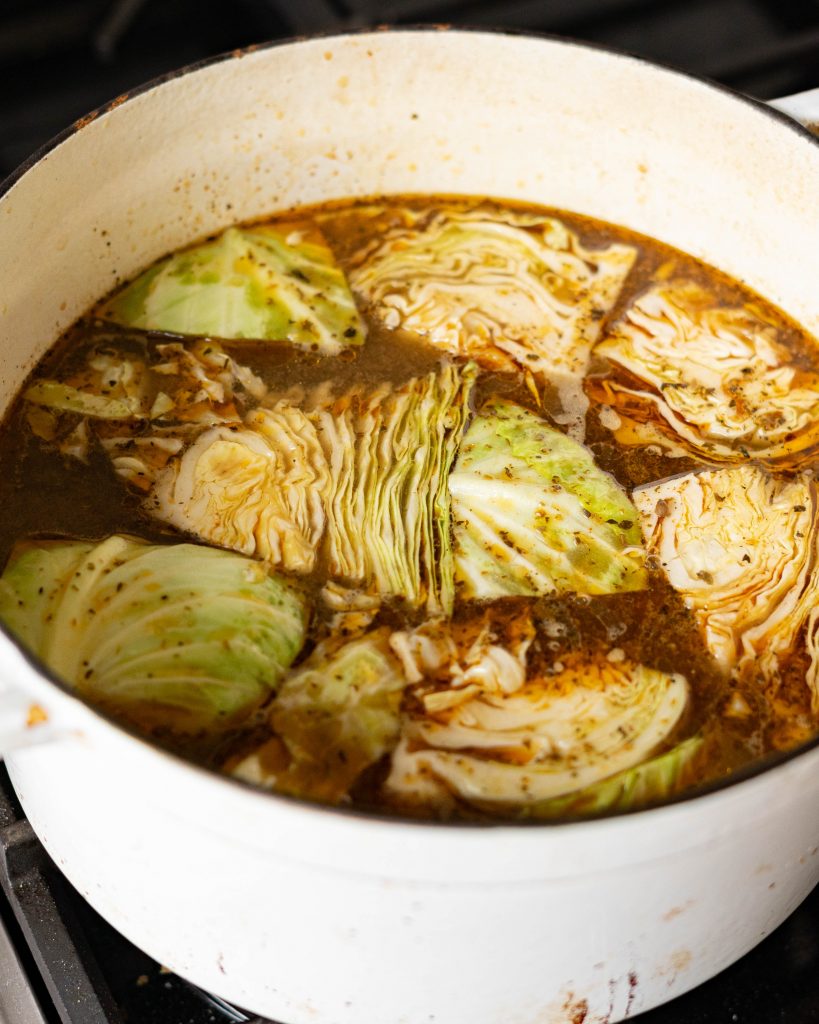
If you refrigerated the corned beef after sous viding, you can reheat it by letting it simmer in the above liquid for 30 minutes.
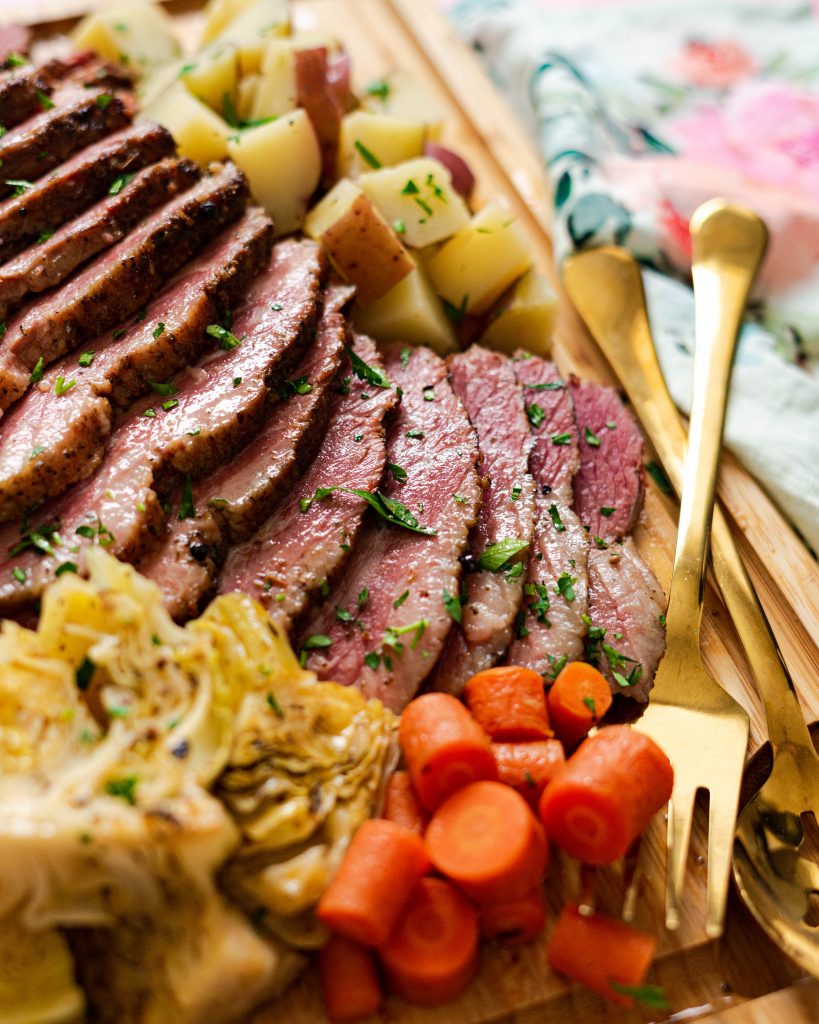
Common Questions
No. You can’t be sure that bag is safe for sous vide and it’s best to not cook it in the brine. Remove it from the package, give it a rinse, pat it dry with paper towels, then vacuum seal and cook.
170 degrees F is the best temperature for sous vide corned beef.
Sous vide corned beef for 24 hours.
You can use leftovers to make incredible reuben sandwiches, or even smoke it to make pastrami!
You can also view this recipe as a step-by-step web story.

Get the Recipe:
Sous Vide Corned Beef (Store-Bought or From Scratch)
Ingredients
Brine (if making from scratch):
- 40 g whole coriander seed
- 40 g peppercorns
- 20 g whole mustard seed
- 40 g dill seed
- 4 g cloves
- 4 g red pepper flakes
- 126 g kosher salt
- 7 g Prague Powder No. 1
- ⅓ cup 65 g brown sugar
- 12 cups 3 liters water, cold
- Half a brisket, 4-6 lbs
Remaining ingredients:
- Store-bought raw corned beef, if using store-bought
- Meat and Potatoes Seasoning, optional
- 4 cups water or beef stock
- 6 red potatoes, cut into large cubes
- 3 carrots, largely diced
- 1 head of green cabbage, cut into 3 inch wedges
- Chopped parsley for garnish
Instructions
Start here if making from scratch:
- Add all brine ingredients except brisket to a very large container (at least 12 quarts). Stir until powders are largely dissolved. Add the brisket, cover, and refrigerate for 7 days, flipping every day or so to keep the brine mixed.
Start here if using store bought:
- Remove the brisket from the bag, rinse, and pat dry with paper towels. Discard the brine. This goes for store-bought or from scratch.
- Fill and preheat your water bath to 170 °F using your immersion circulator.
- Reseason with meat and potatoes seasoning if desired, or a combination of paprika, onion powder, garlic powder, salt, pepper, and oregano.
- Vacuum seal the brisket. You may want to press the "Seal" button again after the first vacuum and seal to ensure a good seal. If you don't have a vacuum sealer, use the water displacement method.
- Cook in the preheated water bath for 24 hours. Make sure the brisket stays submerged through the entire cook using sous vide magnets or placing a ceramic plate on top.
- When done, remove the brisket from the bag. Save the liquid from the bag.
- If desired, broil the brisket on high for about 5 minutes, fat cap side up, to add color. Slice to serve.
- To make the potatoes, carrots, and cabbage, add the reserved liquid from the bag to a stock pot or Dutch oven and add 4 cups water or beef stock. Bring to a boil. Add the potatoes, cabbage, and carrots and boil for 8-10 minutes, or until potatoes are tender.
- Serve corned beef, cabbage, potatoes, and carrots together and garnish with parsley.


I grabbed a preseasoned corned beef for St Pattys this year, it’ll just be two of us so it’s only 1.5 lbs. What is the best way to adapt this recipe? Should I reduce the cooking time to 24 hours?
The whole brisket is definitely on my calendar for next year!
Sarah! I’m so sorry I didn’t get back to you in time. But you’re right on the money: reduce cook time. 12-16 hours is what I would do!
Bought 3 four pounders from Costco and followed your store-bought recipe using the meat & potato seasoning. It was absolutely perfect after 24 hours. The only issue I see is that within about 6 hours, the bags, vacuum sealed with my FoodSaver, turned into balloons—half liquid and half air. It was hard keeping them submerged. Why does this happen when the seal is perfect to begin with.
I’m so glad they turned out so well! I know, this can be frustrating! The meat releases gasses when it cooks and there’s some displacement from rendering fat. I love to use sous vide magnets to combat this.